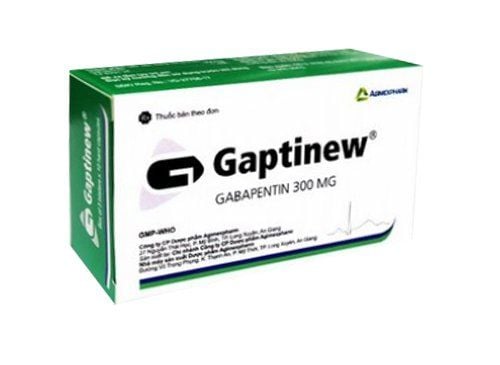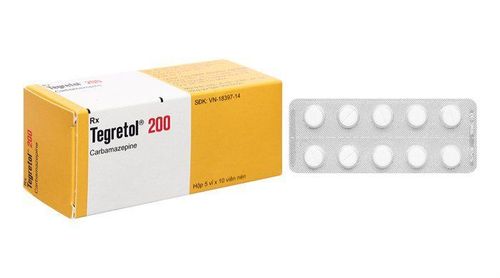This is an automatically translated article.
Synapain 50 has the main active ingredient is Pregabalin with a content of 50mg. The drug is indicated in the treatment of neuropathic pain, generalized anxiety disorder and adjunctive treatment of partial seizures.
1. What is Synapain 50mg?
The main ingredient of Synapain 50 is Pregabalin 50mg. Pregabalin's mechanism of action is by binding to the alpha-2-delta subunit, inhibiting the release of excitatory neurotransmitters (including glutamate, norepinephrine, serotonin, dopamine, and substance P). Although structurally related to GABA, it does not bind to GABA or Benzodiazepine receptors. Pregabalin may also affect pain pathways from the brain stem to the spinal cord.2. Uses of Synapain 50
Synapain is indicated for the following cases:
Treatment of neuropathic pain of central and peripheral origin; Treatment of generalized anxiety disorder in adults; Adjunctive treatment of partial seizures with or without secondary generalization in adults.
3. Dosage and usage of Synapain 50
Dosage:
Neuropathic pain: The starting dose is usually 150mg/day divided into 2-3 times, depending on the response, it can be increased to 300mg/day after 3-7 days, the maximum dose is 600mg/day . Adjunctive treatment of epilepsy: The initial dose is 150mg/day, divided into 2-3 times. The dose can then be increased to 300 mg/day after 1 week. The maximum dose of 600mg/day can be achieved after another week. Anxiety disorders: Take 150 to 600mg/day, divided into 2-3 times per day. The need for treatment should be regularly assessed. When discontinuing Pregabalin, the dose should be gradually reduced, for a minimum of 1 week. Patients with renal impairment : The dose should be reduced according to the patient's renal function; Patients with hepatic impairment: no dose reduction of Synapain is required; Elderly Patients: The dose of Synapain may need to be reduced in elderly patients due to impaired renal function. How to use:
Patients should take Synapain tablets whole with 1 glass of water, during or after meals.
4.Synapin 50 . side effects
When using Synapain, patients may experience the following side effects:
Frequency > 10%:
Cardiovascular: Peripheral edema; Endocrine and metabolic: Weight gain; Nervous system: Dizziness, drowsiness, fatigue, headache; Ophthalmology: Blurred vision, decreased visual acuity. Frequency 1 to 10%:
Cardiovascular: Chest pain, edema, hypotension or hypertension; Dermatology: Contact dermatitis, vesicles, pressure ulcers; Endocrine and metabolic: Decreased libido, water retention, hypoglycemia; Gastrointestinal: Abdominal distension, abdominal pain, constipation, diarrhea, flatulence, gastroenteritis, nausea, hemorrhage, viral gastroenteritis, vomiting; Genitourinary system: Erectile dysfunction, impotence, urinary incontinence, urinary tract infection; Hematology: Thrombocytopenia; Liver: Increased ALT and AST; Infection: Infection, viral infection; Nervous system: gait abnormality, amnesia, ataxia, impaired balance, confusion, disorientation, euphoria, insomnia; Neuromusculoskeletal: Arthralgia, weakness, increased blood creatine phosphokinase, joint swelling, lower extremity cramps, muscle spasms, tremor; Ophthalmology: Conjunctivitis, decreased vision, double vision, eye disease, nystagmus, visual disturbances; Respiratory: Bronchitis, shortness of breath, flu-like symptoms, nasopharyngitis, sore throat, pneumonia, respiratory infection, sinusitis. Frequency <1%:
Cardiovascular: Heart failure, orthostatic hypotension, palpitations, retinal vascular disease, shock, syncope, tachycardia, ventricular fibrillation; Dermatology: Alopecia, cellulitis, skin nodules, skin ulcers, eczema, erythema multiforme, exfoliative dermatitis, skin photosensitivity, skin rash, Stevens-Johnson syndrome, urticaria, vesicular dermatitis; Endocrine and metabolic: Albuminuria, decreased glucose tolerance, urinary tract, increased libido; Digestive: Cholecystitis, cholelithiasis, colitis, digestive disorders, dysphagia, esophageal ulceration, esophagitis, gastritis, gastrointestinal bleeding; Urinary: Ejaculation disorders, oliguria, pelvic pain, proteinuria, urinary retention, abnormal urine.
5. Notes when using Synapain 50
Angioedema: Angioedema has been reported during initial and chronic treatment. Use with caution in patients with a history of episodes of angioedema. Concomitant use with other drugs known to cause angioedema may increase the risk. Discontinue treatment immediately if angioedema occurs. Renal impairment: Caution should be exercised when administering Synapain 50 to patients with renal impairment. It is necessary to adjust the dose of the drug appropriately according to renal function; Substance Abuse: Cases of abuse of pregabalin have been reported. Therefore, it should be used with caution in patients with a history of drug abuse and should be monitored for signs of pregabalin abuse in patients; Congestive Heart Failure: There have been reports of some cases of congestive heart failure with the use of Pregabalin. This condition is mainly seen in elderly patients with cardiovascular damage during treatment with Pregabalin. Therefore, special care should be taken when using Pregabalin for this subject; Diabetic patients: Some diabetic patients who gain weight may need to adjust their antidiabetic medication while using Pregabalin; Withdrawal symptoms: Withdrawal symptoms such as nausea, insomnia, headache, diarrhea, anxiety, depression, flu syndrome, convulsions... have been reported when pregabalin is discontinued. Therefore, patients should be warned about these signs; Ability to drive and use machines: Synapain may cause dizziness, drowsiness, confusion. Therefore, patients must be very careful when performing behaviors that require alertness such as driving, operating machinery; Pregnancy: Pregabalin crosses the placenta. Studies evaluating neonatal outcomes after exposure to pregabalin during pregnancy are limited, so it is best not to use it during pregnancy. If the benefit outweighs the risk, the use can be considered and a specialist should be consulted; Lactation: Pregabalin is present in breast milk and therefore breast-feeding is not recommended during treatment with Synapain. The above is an overview of the drug Synapain 50. The above information is for reference only, it is best for patients to consult their doctor or pharmacist before use.
Please dial HOTLINE for more information or register for an appointment HERE. Download MyVinmec app to make appointments faster and to manage your bookings easily.













